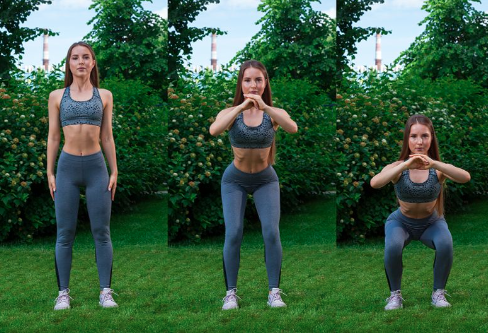How to squat properly without hurting your knees

How to squat correctly
Squats are considered one of the most effective exercises to tighten your legs, and buttocks and get beautiful hip relief. At the same time, incorrect execution can lead to injuries and improper muscle development.
The first step is proper technique. There are several types of squats, such as classic, barbell, and Bulgarian lunges. Each option has its own characteristics, and you need to choose the type of squat that suits your goals and physical capabilities.
Next comes the preparation. You need to choose the right weight and tune in to the exercise. Start with a light weight and gradually increase it. It is important not to exceed your capabilities and not to make sudden movements.
The next step is correct body position. Before starting the squat, you need to stand up straight, with a flat back and feet shoulder-width apart. The gaze is directed straight ahead. When doing a squat, you need to keep your back straight and bend only at the knees so that they remain at 90 °.
When you start to squat, the weight should be evenly distributed on both legs. Lower yourself slowly and in a controlled manner until your thighs are parallel to the floor. Don’t go any lower than necessary and don’t squat too fast.
After you have lowered to the desired point, slowly return to the starting position, keeping your back straight. Do not straighten your legs too abruptly to avoid muscle strain. In the process, breathe evenly and deeply, inhaling on the descent and exhaling on the ascent. This will help you maintain control of your body.
Squat Mistakes
When performing the exercise, the following mistakes should be avoided:
- Do not round your back or slouch as you lower.
- Do not turn your body while ascending or descending.
- Do not lift your heels while lifting, this can lead to injury to the knee joints.
- Do not go lower than parallel to the floor to avoid injury.
It is important to remember that proper squatting takes time and practice. Start with a light weight and gradually increase it when you feel you can handle the current load. Feel free to ask a trainer or instructor for help if you have questions or problems with the exercise.
How to squat correctly to pump up the buttocks
There are several types of squats that can be used to develop the buttocks: with a barbell, dumbbells, or body weight. It is best to choose a squat variation that suits your fitness level and training goals.
Follow the technique of execution, which is mentioned above in the text. If you are squatting without weight, you can gradually increase the load. Start with a light weight and gradually increase it when you feel you can do the exercise correctly.
To develop the buttocks, you need to do squats regularly. It is recommended to perform the exercise 2-3 times a week. It is recommended to perform squats in 3-4 sets, with the number of repetitions from 8 to 12 in each. It is important not to forget about the correct technique for performing the exercise.
To avoid monotony in training and achieve maximum results, you can use various variations of squats. For example, you can do wide or narrow stance squats, with one foot on a stand, or with additional dumbbells. After an intense workout, muscles need time to recover. It is recommended to rest for 48-72 hours after class.
In conclusion, proper squatting is the key to effective training and development of the muscles of the buttocks. Follow technique guidelines, add variety to your workout, eat right, and give your muscles time to recover.